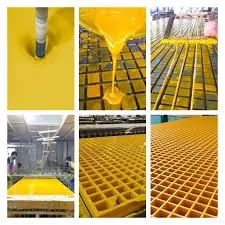
-
 Afrikaans
Afrikaans -
 Albanian
Albanian -
 Amharic
Amharic -
 Arabic
Arabic -
 Armenian
Armenian -
 Azerbaijani
Azerbaijani -
 Basque
Basque -
 Belarusian
Belarusian -
 Bengali
Bengali -
 Bosnian
Bosnian -
 Bulgarian
Bulgarian -
 Catalan
Catalan -
 Cebuano
Cebuano -
 China
China -
 China (Taiwan)
China (Taiwan) -
 Corsican
Corsican -
 Croatian
Croatian -
 Czech
Czech -
 Danish
Danish -
 Dutch
Dutch -
 English
English -
 Esperanto
Esperanto -
 Estonian
Estonian -
 Finnish
Finnish -
 French
French -
 Frisian
Frisian -
 Galician
Galician -
 Georgian
Georgian -
 German
German -
 Greek
Greek -
 Gujarati
Gujarati -
 Haitian Creole
Haitian Creole -
 hausa
hausa -
 hawaiian
hawaiian -
 Hebrew
Hebrew -
 Hindi
Hindi -
 Miao
Miao -
 Hungarian
Hungarian -
 Icelandic
Icelandic -
 igbo
igbo -
 Indonesian
Indonesian -
 irish
irish -
 Italian
Italian -
 Japanese
Japanese -
 Javanese
Javanese -
 Kannada
Kannada -
 kazakh
kazakh -
 Khmer
Khmer -
 Rwandese
Rwandese -
 Korean
Korean -
 Kurdish
Kurdish -
 Kyrgyz
Kyrgyz -
 Lao
Lao -
 Latin
Latin -
 Latvian
Latvian -
 Lithuanian
Lithuanian -
 Luxembourgish
Luxembourgish -
 Macedonian
Macedonian -
 Malgashi
Malgashi -
 Malay
Malay -
 Malayalam
Malayalam -
 Maltese
Maltese -
 Maori
Maori -
 Marathi
Marathi -
 Mongolian
Mongolian -
 Myanmar
Myanmar -
 Nepali
Nepali -
 Norwegian
Norwegian -
 Norwegian
Norwegian -
 Occitan
Occitan -
 Pashto
Pashto -
 Persian
Persian -
 Polish
Polish -
 Portuguese
Portuguese -
 Punjabi
Punjabi -
 Romanian
Romanian -
 Russian
Russian -
 Samoan
Samoan -
 Scottish Gaelic
Scottish Gaelic -
 Serbian
Serbian -
 Sesotho
Sesotho -
 Shona
Shona -
 Sindhi
Sindhi -
 Sinhala
Sinhala -
 Slovak
Slovak -
 Slovenian
Slovenian -
 Somali
Somali -
 Spanish
Spanish -
 Sundanese
Sundanese -
 Swahili
Swahili -
 Swedish
Swedish -
 Tagalog
Tagalog -
 Tajik
Tajik -
 Tamil
Tamil -
 Tatar
Tatar -
 Telugu
Telugu -
 Thai
Thai -
 Turkish
Turkish -
 Turkmen
Turkmen -
 Ukrainian
Ukrainian -
 Urdu
Urdu -
 Uighur
Uighur -
 Uzbek
Uzbek -
 Vietnamese
Vietnamese -
 Welsh
Welsh -
 Bantu
Bantu -
 Yiddish
Yiddish -
 Yoruba
Yoruba -
 Zulu
Zulu
frp dual lamination product
Exploring FRP Dual Lamination Products A New Era in Material Technology
Fiber Reinforced Polymer (FRP) dual lamination is emerging as a groundbreaking advancement in material technology, particularly in sectors requiring high strength and lightweight materials. This innovative approach leverages the strengths of both FRP and dual lamination techniques to create products that are not only resilient but also versatile enough for various applications.
Understanding FRP and Dual Lamination
FRP is composed of a polymer matrix reinforced with fibers, typically made of glass, carbon, or aramid. This composite material boasts an exceptional strength-to-weight ratio, corrosion resistance, and durability, making it ideal for applications ranging from aerospace and automotive engineering to civil infrastructure and marine environments.
Dual lamination, on the other hand, involves the bonding of two layers of material to enhance structural integrity and performance. By combining different materials or processes, dual lamination can significantly improve the physical properties of the resulting product, including its resistance to stress, environmental factors, and fatigue.
The Advantages of FRP Dual Lamination
1. Enhanced Structural Performance The synergy of FRP’s lightweight and strong characteristics with the structural reinforcement provided by dual lamination results in materials that can withstand extreme pressures and stress. This is particularly beneficial in industries like construction and automotive, where performance is critical.
2. Corrosion Resistance FRP itself is known for its superior resistance to corrosion, making it suitable for use in harsh environments. When combined with dual lamination techniques, products can achieve even higher levels of protection against chemicals and moisture, prolonging their lifespan and reducing maintenance costs.
3. Design Flexibility The customization possibilities with FRP dual lamination products are virtually limitless. Designers can tailor the properties of the final product—such as weight, strength, and flexibility—according to specific application needs. This flexibility allows for innovative designs that may not be achievable with traditional materials.
frp dual lamination product

4. Sustainability As industries shift toward more sustainable practices, FRP dual lamination products provide a promising solution. Many FRP materials can be made from recycled composites, and the production processes can be designed to minimize waste. Additionally, their longevity reduces the frequency of replacements, leading to lower overall environmental impact.
Applications of FRP Dual Lamination Products
FRP dual lamination products are gaining traction across various industries, including
- Transportation In automotive manufacturing, FRP dual lamination is used to create lightweight components that improve fuel efficiency while maintaining safety and performance standards. Similarly, aerospace applications exploit the material’s weight savings for enhanced fuel efficiency and increased payload capacity.
- Construction FRP dual lamination is transforming the construction sector by creating strong, resilient materials for bridges, buildings, and other infrastructures that must endure harsh environmental conditions without succumbing to corrosion or fatigue.
- Marine In marine applications, the combination of lightweight characteristics and resistance to saltwater makes FRP dual lamination a popular choice for boat hulls and marine structures.
Conclusion
The advent of FRP dual lamination products marks a significant milestone in material science. Their numerous advantages, including enhanced performance, design versatility, and sustainability, make them an attractive option across various industries. As technology advances, we can expect to see even more innovative applications of FRP dual lamination, paving the way for a future where strength, resilience, and efficiency become standard in material use. The continued exploration and development of these composite materials will likely change the landscape of engineering and design, reinforcing the notion that the future of materials is indeed bright and promising.









